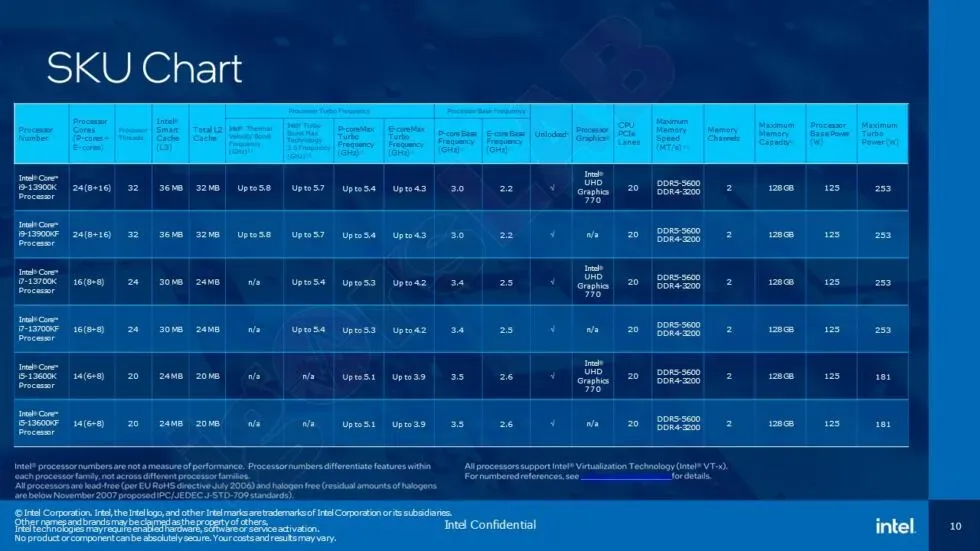13th generation Intel processors will break the 6GHz barrier and consume more power

Intel is gearing up to release the first products of its 13th Gen Core processor family, codenamed Raptor Lake. Among the top facts the company announced on its Intel Technology Tour is that at least one member of the Raptor Lake family will be capable of 6GHz out of the box (via Tom’s Hardware). The number of cores and architectural improvements are generally more important than clock speed when it comes to boosting CPU performance these days, but after years of hovering in the 5GHz band, it’s easy to reach the next number.
In terms of performance, Intel says Raptor Lake will perform about 15 percent better in single-threaded tasks and 41 percent better in multi-threaded workloads than current 12th generation Alder Lake chips. Clock speed is more important for improving single-threaded performance, and adding more cores is usually the best way to improve multithreading speed.
It is not clear which of the processors will be able to run at 6 GHz, under what circumstances, and for how long. The Intel WeU chart posted by Igor’s Lab suggests that the Core i9-13900K will top out at 5.8GHz, though it’s possible it’s capable of further boosts.

The WeU table also confirms what we’ve heard from other leaks: despite architectural similarities to current Alder Lake processors, Intel is boosting performance by doubling the maximum number of E cores in its top-tier processors, from eight to 16. i5-12600K with four E cores will also be replaced by a Core i5-13600K with eight cores. And if the rest of this leaked desktop processor lineup is correct, some low-end Core i5 processors that shipped without E-cores in the 12th generation will get four or eight in the 13th generation.
This WeU chart also indicates that these top Raptor Lake processors will include other changes, including an increased amount of available L2 and L3 cache. It also seems that the maximum power consumption of all chips in Turbo Power mode has increased by 12-63W – from 241W to 253W for the Core i9, from 190W to 253W for the Core i7, and from 150W to 181W for the Core i5. The base power for all chips remains at the same level and is 125 watts.
These maximum power figures do not necessarily mean that all Raptor Lake processors will draw more power than their Alder Lake counterparts – it will depend on the specific power settings your motherboard or PC manufacturer chooses. This means that a Raptor Lake CPU with high power limits and adequate cooling will require more power and better cooling than a similarly configured Alder Lake CPU when running sustained workloads.
People old enough to remember installing Windows 98 will remember that clock speed bragging rights were a big issue in the early 2000s. Intel planned to increase the frequency of its Pentium 4 processors from a midrange of 1 GHz to 10 GHz by 2005, but the architecture barely reached 4 GHz before heat and power consumption became so high that further increases became impossible. (the company’s first attempt at a 4 GHz processor never saw the light of day).
Leave a Reply